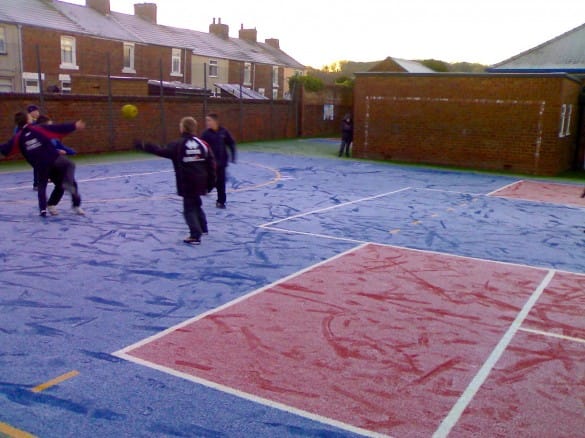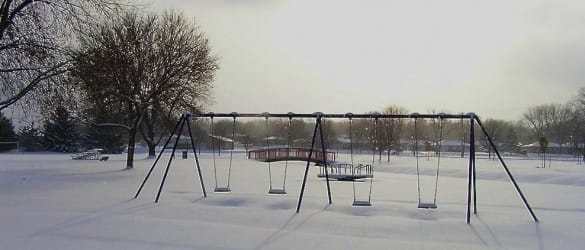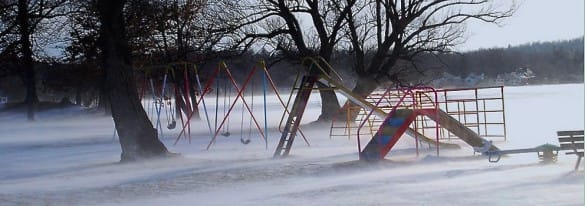- About
- Services
- Play
- Sport
- Case Studies
- News
- Contact
- Pitchbuilder
Unlike natural grass, it is theoretically always possible to play on a synthetic turf pitch. However, there are a few circumstances in which it is advised not to use a synthetic pitch. These exceptions are all related to weather conditions in wintertime.

The temperature resistance of synthetic turf pitches depends on the base material used for the turf blades. Polypropylene turf blades should not be used in weather conditions below -0C. In general, rubber infilled pitches are made of polyethylene turf blades. This base material provides the opportunity to use the pitch down to -20C in frosty weather. The playing surface will however be harder than usual under sub-zero conditions.
In principle snow and ice is not harmful for the pitch and can be permitted to melt naturally. There are however some special rules that apply to using the pitch in snowy conditions. Pitches with rubber infill can still be played on when they are covered with snow, but play will compact the snow to form ice. This means that the snow will take longer to melt and once the snow has compacted it is no longer possible to clear it off the pitch.

Safe Play Surface all weather synthetic turf
The snow forms a layer of ice with the grass fibers frozen in. Trying to remove this layer would damage the fibers. It is possible to clear the snow before playing on the pitch provided this is done in the correct manner. Removing snow with a brush or snow shovel could damage the turf. If a snow shovel has to be used, it should be made of wood or plastic, or fitted with a rubber strip to avoid damage as far as possible. Using a snow-blower to clear snow does not damage the fibers, so this is recommended. Remember that when snow is cleared off the pitch, some infill material will come away with it. This should be put back onto the pitch as soon as the weather permits.

Safe Play Surface all weather synthetic turf
A synthetic turf pitch cannot be used in icy conditions or during thaw. Ice and sometimes also thaw make the pitch slippery, increasing risk of injury to the players. Playing on black ice can also damage the fibers. During a thaw, some sections of the pitch may have thawed out while other parts are still icy. When the base is still frozen, there may be standing water on the pitch. Playing in these conditions can result in deformation of the pitch, which can also lead to nasty injuries. The playing surface is not consistent, with some parts already thawed out. A football player cannot anticipate this, so it is dangerous to play in these weather conditions. The pitch can only be used again once the ground has thawed out completely.
For more information on how we can help, please use this contact form to send us a message.
Or contact us directly at:
Due to our rural location and occasional power outages please contact 07760 759 716 if the landline number is not available.
| Monday | 8:30 - 17:00 |
| Tuesday | 8:30 - 17:00 |
| Wednesday | 8:30 - 17:00 |
| Thursday | 8:30 - 17:00 |
| Friday | 8:30 - 17:00 |
| Saturday | Closed |
| Sunday | Closed |
*Please note we are closed for all public bank holidays.